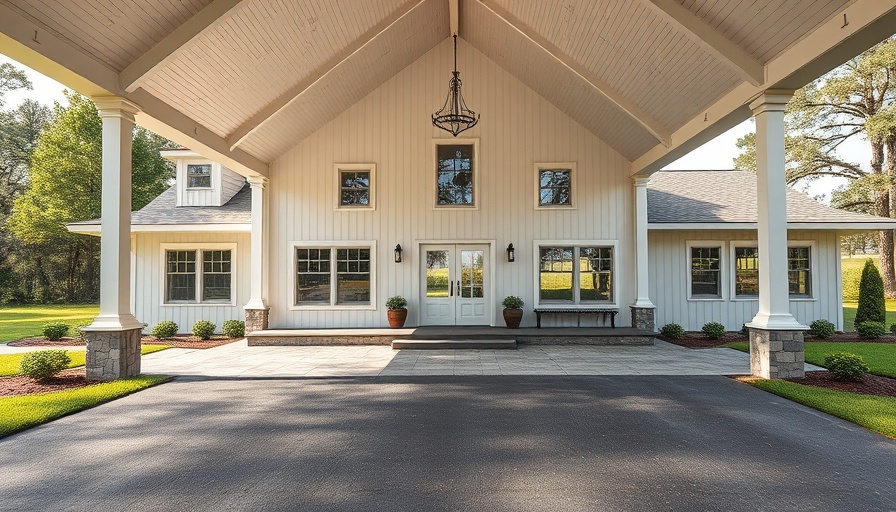
Building a Functional Multigenerational Home: Embracing Family Life
As our society evolves, so does the concept of home—more families are now choosing to live together across multiple generations. This trend isn’t just a response to rising housing costs; it's a transformative lifestyle choice that fosters closeness, support, and enhanced connections. After 14 years of sharing a roof with different generations, I can attest to the benefits, the trials, and the lessons learned from constructing, remodeling, and adapting to a multigenerational living space.
Understanding the Essence of Multigenerational Living
Multigenerational living offers an unparalleled sense of community within the family unit. It provides an environment where sharing resources—be it emotional, financial, or practical—becomes seamless. For example, combining household efforts means pooling financial responsibilities like rent, taxes, and utilities, which can offer significant financial relief. Notably, this cooperative arrangement could mitigate the impact of the soaring cost of living.
Moreover, living in such close quarters can strengthen emotional bonds. Whether It's sharing meals or creating shared memories, the interactions unique to multigenerational homes nurture relationships that can withstand the test of time.
Designing Spaces for Everyone
The layout and design of a multigenerational home are crucial to ensuring that everyone, from toddlers to grandparents, feels at home. Many families favor designs that incorporate both shared and private spaces. This concept allows family members to come together for activities while also granting the necessary peace that comes with privacy.
Recently, I observed an exciting project where a client sought a compound featuring one large common area flanked by two individual wings. Not only does this design allow for community living, but it also accommodates family members' need for solitude, thereby enhancing comfort and easing tensions.
The Rise of One-Floor Living
Among the most significant trends I’ve noticed in multigenerational living is the increasing popularity of one-floor homes. These designs are not just a preference for older generations; younger families are embracing single-story layouts too, valuing the accessibility and convenience they offer.
Imagine a home where everyone can gather without worrying about stairs or multiple levels. Such layouts often come with fewer barriers and allow for easy interaction among family members, making every activity—from simple dinners to holiday celebrations—a more cohesive experience.
Tackling Common Challenges
However, living in a multigenerational home does present its own set of challenges. Space allocation is a common concern, alongside the differing lifestyle preferences of each generation. For example, younger members may prefer more contemporary design elements, whereas older generations often value tradition.
To address these differences, families should engage in open discussions regarding everyone’s preferences before making design decisions. This approach not only promotes collaboration but also helps everyone feel included in shaping their shared living environment.
Embracing Financial Freedom
One of the standout advantages of multigenerational living is the tangible financial benefits. Sharing costs—from groceries to utilities—can make life significantly easier. In fact, when my family decided to pool our resources, we noticed the pressure of the soaring living expenses starting to ease. Currently, we handle our expenses on a simple 50/50 basis, which has helped us maintain stability despite fluctuating costs in our community.
Popular Trends and Best Practices
As the trend grows, tailored solutions are becoming popular among families seeking to establish their multigenerational homes. Resources like home renovation platforms or architectural services can assist families in crafting the perfect space, tailored to their needs. Additionally, existing families may benefit from connecting with others—this community sharing can foster cooperation in seeking out the most effective layouts and solutions.
Considerations for Future Generations
As multigenerational homes become more commonplace, future generations will likely seek even more tailored living situations. This could involve integrating technology for better connectivity among family members or employing eco-friendly designs to create sustainable living environments.
Ultimately, the decision to build or remodel for multigenerational living serves a dual purpose: it supports family ties while simultaneously addressing some modern economic pressures. By carefully considering the needs of all living together, families can foster an environment ripe with support, continuity, and love.
As we embrace this modern family structure, the goal must always be to create spaces that reflect the warmth and support that come with living together. For anyone contemplating making the shift to a multigenerational home, I urge you to consider not just the physical space, but the relationships—and joy—that this living arrangement can foster.
 Add Row
Add Row  Add
Add 



Write A Comment